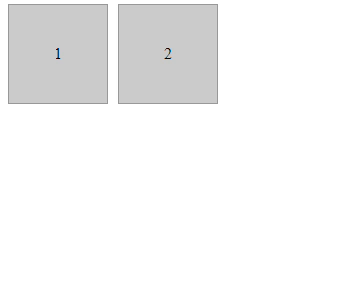Adding rows and columns on hover in CSS allows you to dynamically expand a grid layout when a user hovers over it. This can be visually appealing and useful for displaying additional information or options.
We can use the below approaches to Add Rows and Columns on hover in CSS:
Table of Content
Using JavaScript
This approach utilizes JavaScript to dynamically add new rows upon hovering over the grid container. Upon triggering the hover event, a new grid item is created and appended to the grid container, effectively expanding the grid layout.
Example: Illustration of Adding Rows and Columns on hover in CSS using JavaScript
<!DOCTYPE html>
<html lang="en">
<head>
<meta charset="UTF-8">
<meta name="viewport"
content="width=device-width,
initial-scale=1.0">
<title>Adding Rows and Columns on Hover
in CSS using JavaScript
</title>
<style>
.grid-container {
display: grid;
grid-template-columns: repeat(3, 100px);
grid-auto-rows: 100px;
}
.grid-item {
background-color: #eee;
border: 1px solid #ccc;
text-align: center;
padding: 10px;
}
</style>
</head>
<body>
<div class="grid-container" id="grid">
<div class="grid-item">1</div>
<div class="grid-item">2</div>
<div class="grid-item">3</div>
<div class="grid-item">4</div>
<div class="grid-item">5</div>
<div class="grid-item">6</div>
</div>
<script>
const grid = document.getElementById('grid');
grid.addEventListener('mouseover',
function (event) {
const newRow = document.createElement('div');
newRow.classList
.add('grid-item');
newRow.textContent = grid.childElementCount + 1;
grid.appendChild(newRow);
});
</script>
</body>
</html>
Output:

Using pseudo-elements
In this method, pseudo-elements (:before or :after) are employed to visually simulate the addition of rows or columns upon hovering over the grid container. By styling the pseudo-element to represent a new row or column, the layout appears to expand dynamically upon hover without altering the DOM structure.
Example: Illustration of Adding Rows and Columns on hover in CSS using pseudo-elements
<!DOCTYPE html>
<html lang="en">
<head>
<meta charset="UTF-8">
<meta name="viewport"
content="width=device-width, initial-scale=1.0">
<title>Hover Expand Rows and Columns
With pseudo-elements
</title>
<style>
.container {
display: grid;
grid-template-columns: repeat(3, 100px);
grid-auto-rows: 100px;
gap: 10px;
}
.item {
position: relative;
background-color: #ccc;
border: 1px solid #999;
display: flex;
justify-content: center;
align-items: center;
transition: all 0.3s ease;
}
.item::before {
content: "";
position: absolute;
background-color: rgba(255, 0, 0, 0);
transition: all 0.3s ease;
top: 0;
left: 0;
width: 100%;
height: 100%;
z-index: -1;
}
.item:hover::before {
background-color: rgba(255, 0, 0, 0.3);
}
.item:hover:nth-child(3n+2)::before {
width: 200%;
}
.item:hover:nth-child(3n+1)::before {
height: 200%;
}
</style>
</head>
<body>
<div class="container">
<div class="item">1</div>
<div class="item">2</div>
</div>
</body>
</html>
Output:

Using Grid
This approach uses CSS Grid layout features to dynamically adjust the number of columns upon hovering over the grid container. By transitioning the grid-template-columns property, the layout smoothly expands or contracts, visually mimicking the addition or removal of columns without requiring additional markup or JavaScript.
Example: Illustration of Adding Rows and Columns on hover in CSS using Grid
<!DOCTYPE html>
<html lang="en">
<head>
<meta charset="UTF-8">
<meta name="viewport"
content="width=device-width, initial-scale=1.0">
<title>Adding Rows and Columns on
Hover in CSS using Grid
</title>
<style>
.grid-container {
display: grid;
grid-template-columns: repeat(3, 100px);
grid-auto-rows: 100px;
transition: grid-template-columns 0.5s ease;
}
.grid-item {
background-color: #eee;
border: 1px solid #ccc;
text-align: center;
padding: 10px;
}
.grid-container:hover {
grid-template-columns: repeat(4, 100px);
}
</style>
</head>
<body>
<div class="grid-container">
<div class="grid-item">1</div>
<div class="grid-item">2</div>
<div class="grid-item">3</div>
<div class="grid-item">4</div>
<div class="grid-item">5</div>
<div class="grid-item">6</div>
</div>
</body>
</html>
Output:
